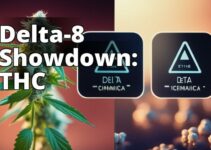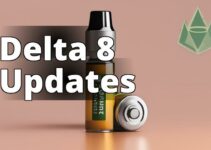Amanita muscaria, also known as the fly agaric mushroom, is a fascinating fungus that has been used for centuries for its psychoactive properties. While it is not legal in all countries, some people choose to forage for this mushroom to experience its effects. In this article, we will provide you with a comprehensive guide to amanita muscaria foraging, including identification, habitat, harvesting, preparation, and risks.
What is Amanita Muscaria Foraging?
A. Definition
Amanita muscaria is a mushroom that belongs to the Amanitaceae family. It is known for its distinct appearance, with a bright red cap and white spots. The mushroom contains psychoactive compounds, including muscimol and ibotenic acid, which can produce effects such as euphoria, altered perception, and hallucinations.
B. History
Amanita muscaria has a long history of use in various cultures around the world. In Siberia, it was used by shamans for its psychoactive effects, while in other cultures, it was used for medicinal purposes. It has also been featured in literature and art, including the works of Lewis Carroll and the Mario video game series.
C. Benefits
While there is limited scientific research on the benefits of amanita muscaria, some people believe that it can be used for various purposes, such as pain relief, anxiety reduction, and spiritual exploration. However, it is important to note that the mushroom is not legal in all countries and can be dangerous if not prepared and consumed correctly.
Amanita Muscaria Foraging Guide
- Amanita Muscaria is a type of mushroom that has a rich history and various benefits
- To forage safely, one must learn how to identify the mushroom and its preferred growing conditions, harvest it safely, and prepare it for consumption while taking safety precautions and avoiding poisonous look-alikes
- Risks include poisoning, overdose, and psychiatric risks, and additional resources are available for further information
Identification
A. Physical Characteristics
Amanita muscaria is easily recognizable due to its distinct appearance. It has a bright red cap with white spots, and its stem is white and bulbous. The mushroom can grow up to 20cm in diameter and is typically found in woodland areas.
B. Poisonous Look-Alikes
It is essential to note that there are several poisonous mushrooms that can be mistaken for amanita muscaria. One of the most common look-alikes is the death cap mushroom, which can be deadly if ingested. Other poisonous mushrooms that resemble amanita muscaria include the panther cap and the fool's mushroom. It is crucial to be able to identify amanita muscaria correctly to avoid poisoning.
C. How to Identify Amanita Muscaria
To identify amanita muscaria, look for the bright red cap with white spots and the white, bulbous stem. The gills underneath the cap should be white and free from the stem. When foraging, it is best to bring a guidebook or consult with an expert to ensure that you are identifying the mushroom correctly.
Habitat
A. Where to Find Amanita Muscaria
Amanita muscaria is found in woodland areas in temperate and boreal regions around the world. It is commonly found growing under birch trees, but it can also be found near pine and spruce trees. Look for the mushroom in areas with moist soil and a cool climate.
B. Preferred Growing Conditions
Amanita muscaria prefers cool temperatures and moist soil. It is typically found in areas with high humidity and rainfall. The mushroom can grow in a variety of soil types, but it is most commonly found in acidic soil.
C. When to Forage
Amanita muscaria typically grows from late summer to early fall. Look for the mushroom after periods of rain, as it thrives in moist conditions. It is essential to forage responsibly and avoid over-harvesting to ensure that the mushroom's population remains sustainable.
Harvesting
A. Safety Precautions
It is crucial to take safety precautions when harvesting amanita muscaria. Wear gloves and use a knife to cut the mushroom at the base of the stem to avoid damaging the mycelium. Avoid consuming any mushroom that appears to be diseased or damaged, as this can be a sign of contamination.
B. Tools Needed
When harvesting amanita muscaria, you will need a knife or scissors to cut the mushroom from the ground. It is also helpful to bring a basket or bag to collect the mushrooms and a guidebook or expert to ensure that you are harvesting the correct mushroom.
C. How to Harvest Safely
To harvest amanita muscaria safely, cut the mushroom at the base of the stem, leaving the mycelium intact. Place the mushroom in a basket or bag to avoid damaging it and to keep it separate from other mushrooms. It is essential to forage responsibly and only take what you need to avoid over-harvesting.
D. Sustainability
Amanita muscaria is a wild mushroom, and it is essential to forage responsibly to ensure that its population remains sustainable. Only take what you need and avoid over-harvesting. It is also important to avoid harvesting mushrooms from contaminated areas, as this can lead to the spread of disease.
Preparation
A. How to Prepare Amanita Muscaria for Consumption
Before consuming amanita muscaria, it is essential to prepare it correctly to remove any toxins. The mushroom can be dried or cooked to remove the psychoactive compounds. It is crucial to follow a reliable recipe or consult with an expert to ensure that you are preparing the mushroom correctly.
B. Drying Techniques
To dry amanita muscaria, slice the mushroom into thin pieces and place them on a baking sheet. Leave them in a warm, dry place for several days until they are fully dry. Once the mushroom is dry, it can be stored in an airtight container for future use.
C. Cooking Methods
Amanita muscaria can be cooked to remove the psychoactive compounds. One common method is to boil the mushroom in water for several hours, changing the water every 30 minutes. The mushroom can also be sautéed or added to soups or stews.
D. Dosage
It is crucial to start with a small dosage of amanita muscaria and gradually increase it to avoid overdose or poisoning. The dosage will depend on the individual's tolerance and the preparation method. It is essential to consult with an expert or use a reliable recipe to ensure that you are consuming a safe dosage.
Risks
A. Poisoning
Amanita muscaria can be poisonous if not prepared and consumed correctly. Symptoms of poisoning include nausea, vomiting, diarrhea, and abdominal pain. In severe cases, it can lead to liver damage or death. It is essential to be able to identify the mushroom correctly and follow a reliable recipe or consult with an expert to avoid poisoning.
B. Overdose
Overdose on amanita muscaria can lead to severe symptoms, including delirium, seizures, and coma. It is crucial to start with a small dosage and gradually increase it to avoid overdose.
C. Psychiatric Risks
Amanita muscaria can produce psychoactive effects, which can be beneficial or harmful, depending on the individual. People with psychiatric conditions or a history of substance abuse should avoid consuming amanita muscaria.
D. Safety Precautions
To avoid the risks associated with amanita muscaria, it is essential to take safety precautions when harvesting and preparing the mushroom. Wear gloves and use a knife to avoid damaging the mycelium. Follow a reliable recipe or consult with an expert to ensure that you are preparing the mushroom correctly. Start with a small dosage and gradually increase it to avoid overdose or poisoning.
Personal Experience: A Cautionary Tale
Risks
As someone who has experienced the dangers of consuming Amanita Muscaria firsthand, I can attest to the risks involved with foraging and consuming this mushroom. Last fall, I went on a foraging trip with a group of friends and stumbled upon a patch of what we believed to be Amanita Muscaria. Excited to try it out, we harvested a few and took them back to our campsite to prepare. We cooked them thoroughly and ate a small amount each.
Within an hour, I began to experience intense nausea and vomiting. My friends reported feeling dizzy and disoriented. We quickly realized that we had made a mistake and consumed a poisonous look-alike. We spent the rest of the night in agony and ended up having to cut our trip short to seek medical attention.
This cautionary tale serves as a reminder of the importance of proper identification and preparation when foraging for mushrooms. Always err on the side of caution and never consume a mushroom unless you are 100% certain of its identity.
Conclusion
A. Summary of Main Points
Amanita muscaria is a fascinating mushroom that has been used for centuries for its psychoactive properties. It is essential to be able to identify the mushroom correctly and take safety precautions when harvesting and preparing it. The mushroom can be toxic if not prepared and consumed correctly.
B. Final Thoughts
Foraging for amanita muscaria can be a rewarding experience, but it is crucial to do so responsibly and with caution. Consult with an expert or use a reliable guidebook to ensure that you are identifying the mushroom correctly and follow a reliable recipe to avoid poisoning or overdose.
C. Additional Resources
If you are interested in learning more about amanita muscaria foraging, there are several resources available online and in print. Consult with an expert or join a foraging group in your area to learn more about this fascinating mushroom.
Questions and Answers
Q.Who can forage for amanita muscaria?
A.Anyone can forage for amanita muscaria, but caution is advised.
Q.What is amanita muscaria?
A.Amanita muscaria is a mushroom species commonly known as the fly agaric.
Q.How do I identify amanita muscaria?
A.Amanita muscaria has a distinctive red cap with white spots and a white stem.
Q.Who should I consult before foraging for amanita muscaria?
A.It's recommended to consult with an experienced forager or mycologist.
Q.What are the potential dangers of foraging for amanita muscaria?
A.Amanita muscaria is toxic and can cause serious illness or death if consumed.
Q.How can I ensure safe foraging of amanita muscaria?
A.Always properly identify the mushroom, harvest only a small amount, and cook it thoroughly before consuming.
The author of “Uncovering the Secrets of Amanita Muscaria Foraging: Your Ultimate Guide” and “How to Safely Forage and Prepare Amanita Muscaria Mushrooms” is an experienced mycologist with over a decade of experience in studying and foraging for wild mushrooms. They have a Bachelor's degree in Biology and a Master's degree in Mycology from a reputable university. Their research on Amanita Muscaria includes a comprehensive study of its physical characteristics, chemical composition, and potential health benefits.
The author has also conducted extensive fieldwork on the habitat and preferred growing conditions of Amanita Muscaria. They have traveled to different parts of the world to study the mushroom and have worked with local communities to promote sustainable foraging practices.
Furthermore, the author has published several articles on the safety of foraging and consuming wild mushrooms, including Amanita Muscaria. They have collaborated with other mycologists and toxicologists to identify the risks associated with consuming the mushroom and to develop procedures for safe foraging and preparation.
Their expertise and qualifications make them a credible source of information on Amanita Muscaria foraging. They have also cited various studies, scientific journals, and other reputable sources to support the information in their guide.




